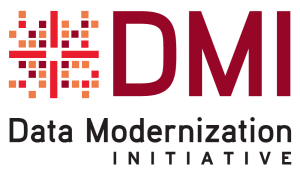PHII is starting the summer with three new toolkits designed to support public health agencies’ work in leveraging information systems to support improved health outcomes, in domains ranging from mental health to childhood immunizations.
Data Modernization Initiative (DMI) Toolkit
 Prepared for Epidemiology and Laboratory Capacity (ELC)-recipient health departments, our new Data Modernization Initiative Toolkit assists agencies in engaging stakeholders to plan and implement data modernization projects–from conducting environmental scans to identify opportunities to defining and prioritizing projects. Because DMI projects will differ between agencies, this toolkit is intended to harness leadership and stakeholder buy-in for data modernization work. Key sections include making the value case, assessing your agency’s current state and steps to implementation. Browse the toolkit.
Prepared for Epidemiology and Laboratory Capacity (ELC)-recipient health departments, our new Data Modernization Initiative Toolkit assists agencies in engaging stakeholders to plan and implement data modernization projects–from conducting environmental scans to identify opportunities to defining and prioritizing projects. Because DMI projects will differ between agencies, this toolkit is intended to harness leadership and stakeholder buy-in for data modernization work. Key sections include making the value case, assessing your agency’s current state and steps to implementation. Browse the toolkit.
Immunization Information Systems (IIS) Procurement Toolkit

Information technology procurements are often complex both technically and legally, and require thoughtful planning and lots of lead time. The IIS Procurement Toolkit is intended to help IIS programs who are beginning the process of procuring a new system to attain performance and sustainability goals through procurement best practices. The guidance in this toolkit is designed to help IIS programs avoid what could be frustrating, time-consuming and even costly missteps. This toolkit relates to both procuring software (e.g., migrating to a new IIS platform, acquiring a new or replacement module) and obtaining technical services (e.g., obtaining or renewing maintenance and service contracts). Browse the toolkit.
The Child and Adolescent Mental Health (CAMH) Playbook (COMING SOON)
State, territorial, local and tribal (STLT) health departments and other agencies can use our new Child and Adolescent Mental Health Playbook toolkit to implement information-driven strategies that improve child and adolescent health. This online guide includes profiles of existing data sources that might serve as key indicators for CAMH (e.g., school readiness, middle school behavior records and school attendance). The profiles will also include relevant federal laws that regulate the use and sharing of the data, technologies that are used for capturing the data, and any data standards used in recording. Public health experts provide input on selected indicators to document how they are used now, strengths and weaknesses of the data, and how they might form the basis for multi-agency collaboration.


